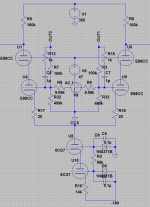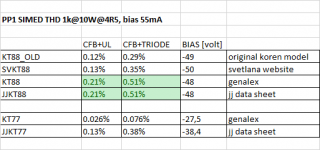I may be a bit late to the party, but this looks super duper good!
I have some experience with toroidal output trannies from my KT66 project (schematic and photos here). I like those toroids very much, but they need a bit of care to make sure the DC bias currents are as symmetric as possible. The conventional auto bias or fixed bias might not be the best solution here, because the tubes will drift after a while, which will give an imbalance of the bias currents and therefore saturate the toroid. I used a Tent bias board to keep the balance, but I guess there are other ways to do that, too -- just make sure you have some thingy taking care that the bias currents are always nicely symmetrical!
Will this become a kit? Or will you provide boards and a BOM? I am already making up excuses to build this...
I have some experience with toroidal output trannies from my KT66 project (schematic and photos here). I like those toroids very much, but they need a bit of care to make sure the DC bias currents are as symmetric as possible. The conventional auto bias or fixed bias might not be the best solution here, because the tubes will drift after a while, which will give an imbalance of the bias currents and therefore saturate the toroid. I used a Tent bias board to keep the balance, but I guess there are other ways to do that, too -- just make sure you have some thingy taking care that the bias currents are always nicely symmetrical!
Will this become a kit? Or will you provide boards and a BOM? I am already making up excuses to build this...
Last edited:
I have used the toriody very good.
I use RCA 811a the current draw is always the same all kt88's/6550 drift very bad compared to 811A. I have toriody with 2k A to anode for the 811a with cathode feedback still got to make the amps
I use RCA 811a the current draw is always the same all kt88's/6550 drift very bad compared to 811A. I have toriody with 2k A to anode for the 811a with cathode feedback still got to make the amps
Will this become a kit? Or will you provide boards and a BOM? I am already making up excuses to build this...
The driver pcb is already prepared for additional autobias board.
I had no intention of selling boards and at the present moment no piece available for interest. It is possible that I will change my mind. 🙂
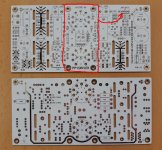
Not entirely, five boards were made, two for me, two are reserved for my friend and one is spare.
If you have serious interest I can share you gerber files .
If you have serious interest I can share you gerber files .
I have the toroidy cfb 6.6k output transformers on order. They supply the dimensions but in the past they were wrong. Can I get a measurement of the diameter and height of this transformer?
Guys, help me understand theese distortion profiles. I measured two output tubes , KT88EH and KT77JJ. Conditions were the same, B+ 400V, Iq 55mA, global feedback 10-12dB, 10W into 4R5 (Class A operation). As you can see KT77 has better performance. Got me surprised the KT88 triode mode THD , it's worse than UL.
KT77JJ sin1k 10W@4R5
UL 0.15%
TRIODE 0.07%
KT88EH sin1k 10W@4R5
UL 0.28%
TRIODE 0.5%
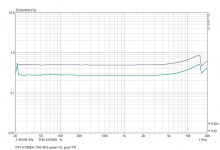
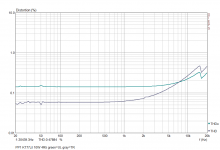
KT77JJ sin1k 10W@4R5
UL 0.15%
TRIODE 0.07%
KT88EH sin1k 10W@4R5
UL 0.28%
TRIODE 0.5%


Hi LKA,
Did you consider a differential cascode with E88CC and a CCS tail? @ 350V, 100K anode load and 47V on the upper tubes grids you can do +50dB of gain use less parts and still swing 140Vpp and you can use the extra gain for more global Negative Feedback that will help a lot with lowering output impedance, frequency response and lowering THD.
Did you consider a differential cascode with E88CC and a CCS tail? @ 350V, 100K anode load and 47V on the upper tubes grids you can do +50dB of gain use less parts and still swing 140Vpp and you can use the extra gain for more global Negative Feedback that will help a lot with lowering output impedance, frequency response and lowering THD.
Attachments
And if you'd replace the 6CG7 CCS by two transistors in cascode, you'd need no -180 V, but use the negative bias supply instead.
Best regards!
Best regards!
Conditions were the same, B+ 400V, Iq 55mA...
The condition may be optimum to KT77 but not to KT88. KT88 may need some other Iq to be most linear. Try to fine tune. It may also be that those KT88s are not well matched and require different drive voltage. Try to fine tune this too.
To have constant (same) GNFB with UL and triode, require that you adjust P3 for both modes. Did you do this?global feedback 10-12dB...
"It may also be that those KT88s are not well matched and require different drive voltage"
I bought them as matched quad from toroidy.pl
"To have constant (same) GNFB with UL and triode, require that you adjust P3 for both modes. Did you do this?"
I know, but I did not adjust the P3. The difference is less than 2dB.
measured OLG an CLG at 1kHz
UL OLG=32.4dB CLG=22dB Feedback=10.4dB
TR OLG=29.7dB CLG=21dB Feedback=8.7dB
KT77 behaves very well at 55mA and 35mA too.
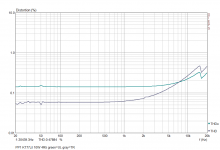
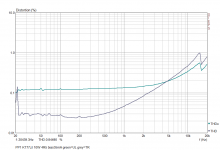
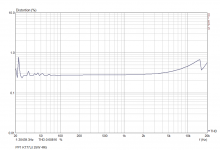
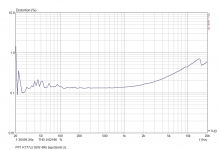
I bought them as matched quad from toroidy.pl
"To have constant (same) GNFB with UL and triode, require that you adjust P3 for both modes. Did you do this?"
I know, but I did not adjust the P3. The difference is less than 2dB.
measured OLG an CLG at 1kHz
UL OLG=32.4dB CLG=22dB Feedback=10.4dB
TR OLG=29.7dB CLG=21dB Feedback=8.7dB
KT77 behaves very well at 55mA and 35mA too.




Just to clarify, you kept mentioning UL, but isn’t the OPT intended for CFB? Or did you mean UL+CFB?
Your finding appears to agree with Patrick Turner’s, i.e., CFB (by extension UL+CFB) could have even lower distortion than TR. Menno van der Veen found pretty much the same thing with the “SuperTriode” (UL+CFB) connection.
Last edited:
Lots of variables... but it’s pretty clear that the KT77JJ isn’t really a KT77, so perhaps you managed to hit a sweet spot wrt to its performance.
Not really, I tried 3 bias points for KT77 (mfd JJ) and all perform well. I'm going to do the same for KT88EH.
Interesting project.
What is your turn ratio between CFB and primary?
- Home
- Amplifiers
- Tubes / Valves
- PP CFB toroidy OPT
